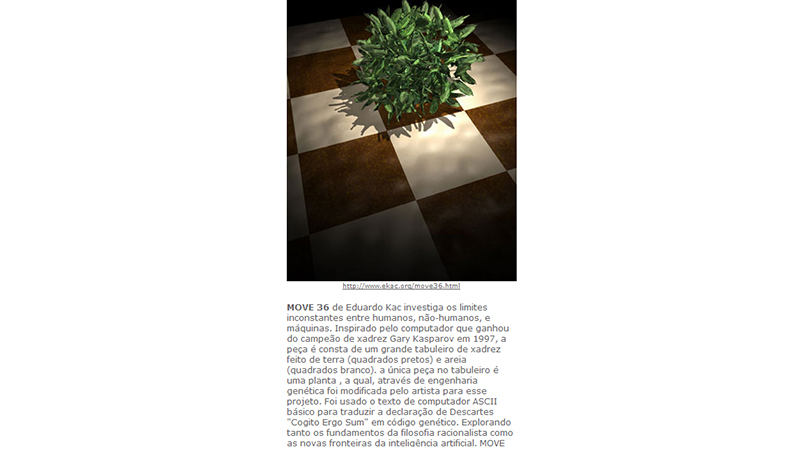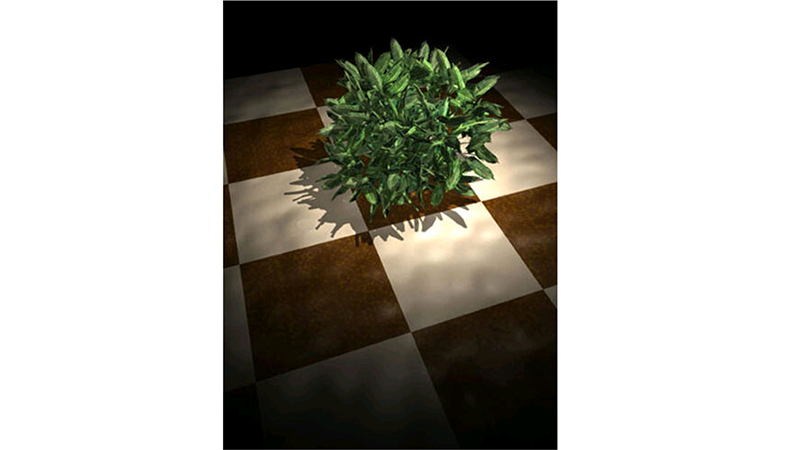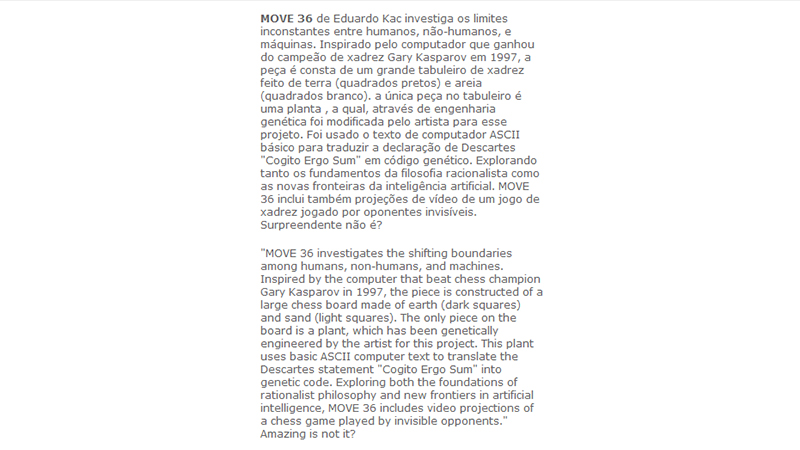"MOVE 36" "de Eduardo Kac investiga os limites inconstantes entre humanos, não-humanos, e máquinas. Inspirado pelo computador que ganhou do campeão de xadrez Gary Kasparov em 1997, a peça é consta de um grande tabuleiro de xadrez feito de terra (quadrados pretos) e areia (quadrados branco). a única peça no tabuleiro é uma planta , a qual, através de engenharia genética foi modificada pelo artista para esse projeto. Foi usado o texto de computador ASCII básico para traduzir a declaração de Descartes "Cogito Ergo Sum" em código genético. Explorando tanto os fundamentos da filosofia racionalista como as novas fronteiras da inteligência artificial. MOVE 36 inclui também projeções de vídeo de um jogo de xadrez jogado por oponentes invisíveis. Surpreendente não é?"
"MOVE 36" investigates "the shifting boundaries among humans, non-humans, and machines. Inspired by the computer that beat chess champion Gary Kasparov in 1997, the piece is constructed of a large chess board made of earth (dark squares) and sand (light squares). The only piece on the board is a plant, which has been genetically engineered by the artist for this project. This plant uses basic ASCII computer text to translate the Descartes statement "Cogito Ergo Sum" into genetic code. Exploring both the foundations of rationalist philosophy and new frontiers in artificial intelligence, MOVE 36 includes video projections of a chess game played by invisible opponents. Amazing is not it?" -- From The Museum of the Essential and Beyond That
1 COPY IN THE NEXT
Museum of the Essential and Beyond That
Published in 2004 by Museum of the Essential and Beyond That.
Located in Museum of the Essential and Beyond That: 2° Andar: Bio Arte (Bio Art). Regina Pinto transferred the files for this copy to the Electronic Literature Lab in Summer of 2018. The files were held in the ELO Repository at the Electronic Textual Cultures Lab, later moved to the ELO server in 2019.
PUBLICATION TYPE
Showcase
COPY MEDIA FORMAT
Web


